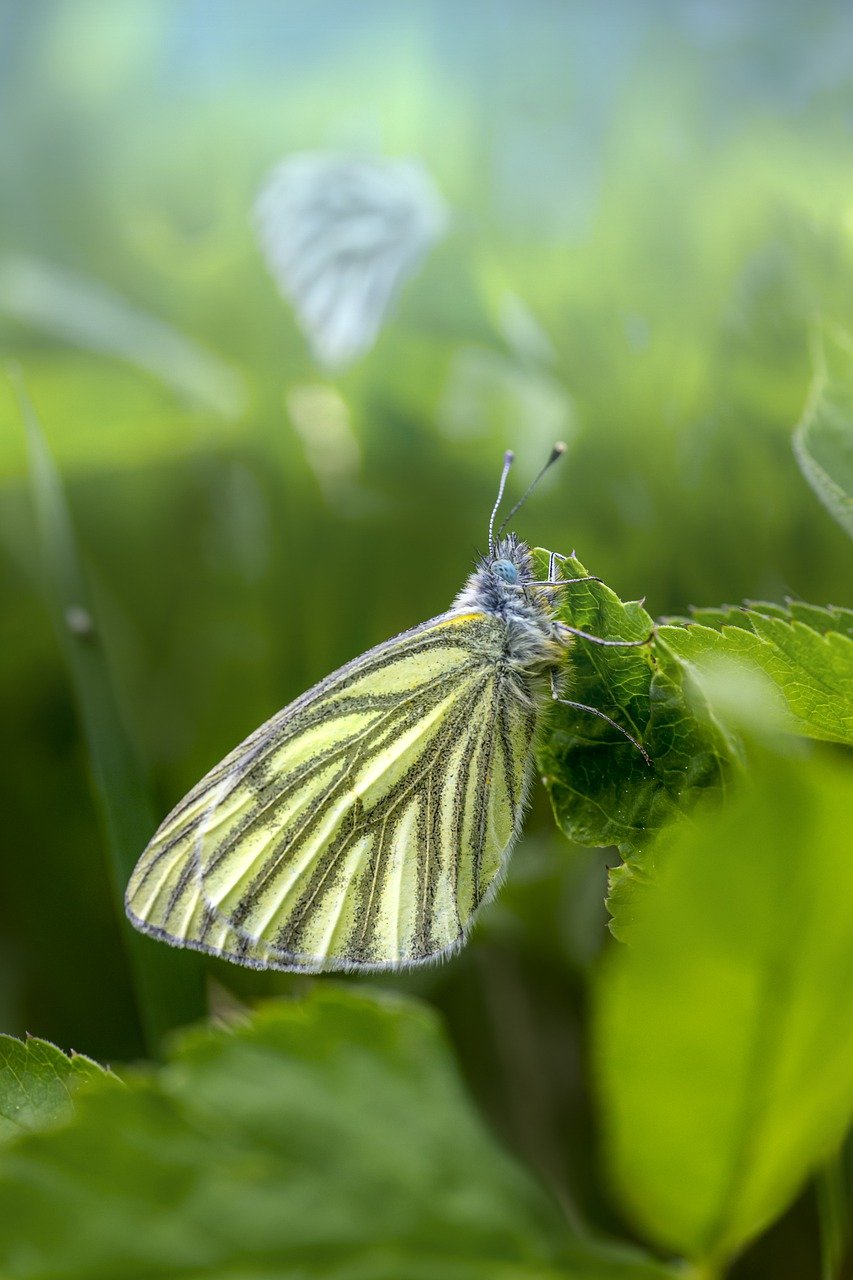The Green-veined White (Pieris napi) is a delicate and widespread butterfly belonging to the family Pieridae. Known for the greenish patterns on its underwings, this species thrives in moist, grassy habitats and plays a vital role in pollination. Its subtle beauty and ecological importance make it a favorite among butterfly enthusiasts.
Physical Description
- Size:
- Wingspan: 40–50 mm.
- Coloration:
- Upperwings: White with black tips on the forewings; females have additional black spots.
- Underwings: Pale white or yellow with intricate greenish-gray veins formed by scales, giving the butterfly its name.
- Sexual Dimorphism:
- Females are slightly larger and have more pronounced markings than males.
Behavior
- Flight:
- Flight is fluttery and low, often close to vegetation.
- Activity Period:
- Flies from April to September, with two to three generations per year depending on the climate.
- Feeding:
- Adults feed on nectar from a variety of flowers, including dandelions, clover, and buttercups.
Habitat
- Found in damp, grassy areas, including:
- Meadows.
- Woodland clearings.
- Riverbanks.
- Gardens and roadside verges.
- Prefers habitats rich in flowering plants and host plants for larvae.
Life Cycle
- Eggs:
- Laid singly on the undersides of host plant leaves, particularly from the mustard family (Brassicaceae).
- Larvae:
- Pale green with faint yellow stripes, camouflaging well with their surroundings.
- Feed on leaves of host plants such as garlic mustard (Alliaria petiolata), wild cabbage, and watercress.
- Pupae (Chrysalis):
- Green or brown, blending with vegetation; overwintering occurs at this stage in colder climates.
- Adults:
- Emerge in spring or summer, ready to mate and continue the cycle.
Distribution
- Found across Europe, parts of Asia, and North Africa.
- Common in temperate regions and adaptable to varying altitudes, from sea level to mountainous areas.
Conservation Status
- Classified as Least Concern, with stable populations in most regions.
- Sensitive to habitat loss, pesticide use, and agricultural practices that reduce the availability of host plants.
Ecological Role
- Pollination: Contributes to pollinating wildflowers and crops.
- Food Source: Larvae and adults are prey for birds, spiders, and predatory insects, forming a vital link in the food web.
Interesting Facts
- Seasonal Variation: The intensity of green veining on the underwings varies by season, with spring generations showing stronger markings.
- Camouflage: The green-veined pattern helps the butterfly blend into its surroundings, offering protection from predators.
- Migration: While not as migratory as the Painted Lady, some populations show limited movement to new areas.
Summary
The Green-veined White (Pieris napi) is an understated yet important butterfly, valued for its subtle beauty and ecological contributions. Thriving in diverse habitats, this species symbolizes the health of moist, flowering landscapes. Conservation efforts focused on preserving wildflower meadows and reducing pesticide use are essential for maintaining its populations.
Visited 832 times, 12 visit(s) today
Views: 1453
Subscribe to the newsletter:
